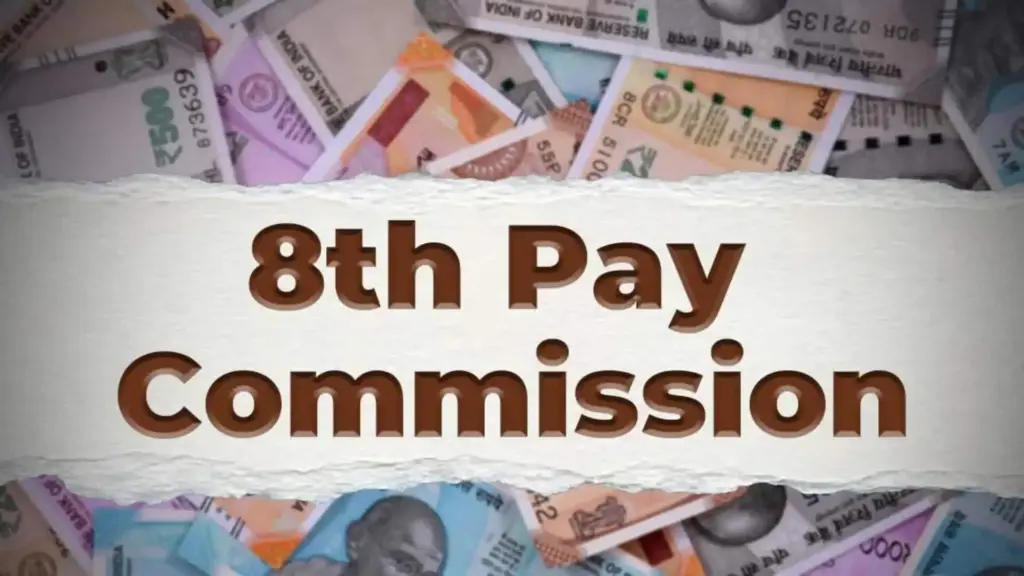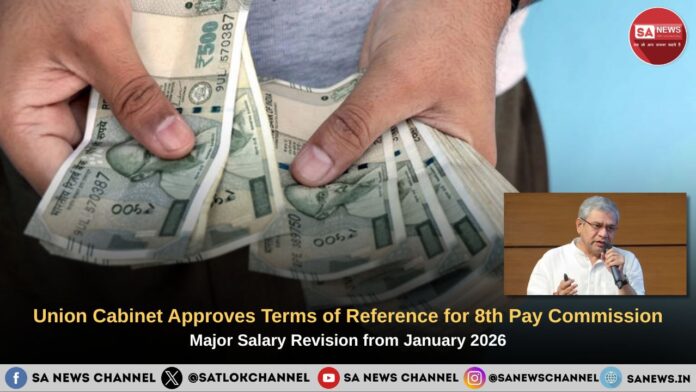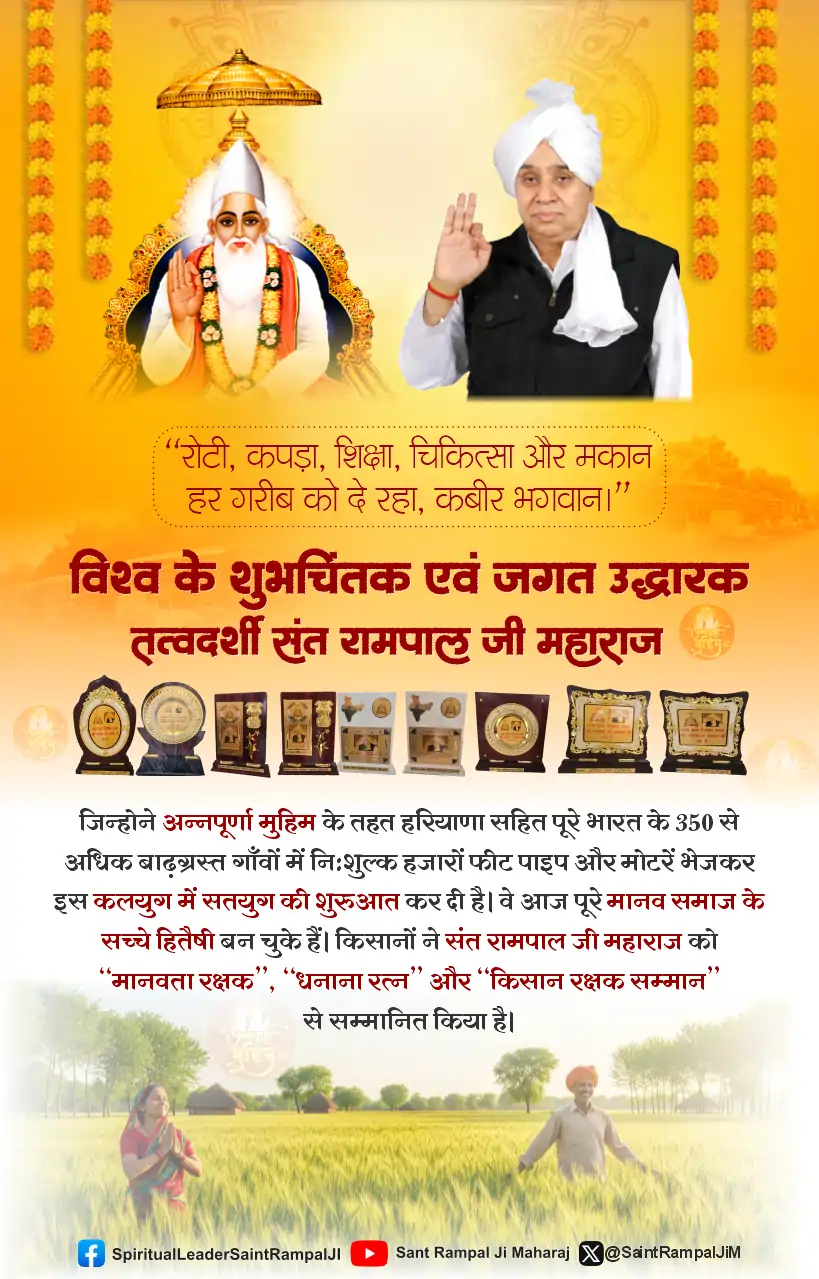The Union Cabinet on Tuesday (October 28, 2025) approved the Terms of Reference (ToR) for the 8th Pay Commission (CPC) , the statutory body that determines the pay structure, allowances, and pension benefits of central government employees. The decision marks a crucial step towards revising the salaries of nearly 50 lakh central government employees and 69 lakh pensioners across India.
The commission, chaired by former Supreme Court judge Justice Ranjana Prakash Desai, has been tasked to submit its recommendations within 18 months of its constitution, with implementation expected from January 1, 2026.
Key Highlights of the 8th Pay Commission Announcement

- Cabinet Approval: The Union Cabinet officially cleared the Terms of Reference for the 8th CPC on October 28, 2025.
- Implementation Target: The revised pay scales are expected to come into effect from January 1, 2026.
Commission Composition
- Chairperson: Justice Ranjana Prakash Desai (Former Supreme Court Judge)
- Member (Part-time): Professor Pulak Ghosh (IIM Bangalore)
- Member-Secretary: Pankaj Jain (Petroleum Secretary)
- Beneficiaries: Around 50 lakh serving central government employees and 69 lakh pensioners.
- Timeline: Recommendations to be finalized within 18 months of its formation.
- Possible Interim Report: The panel may submit an interim report if required before final recommendations.
- Previous Commission: The 7th Pay Commission was constituted in February 2014 and implemented from January 1, 2016.
Cabinet’s Decision and Scope of Recommendations
Information and Broadcasting Minister Ashwini Vaishnaw announced after the Cabinet meeting that the 8th Pay Commission’s Terms of Reference were finalized following consultations with multiple ministries, state governments, and staff associations.
He stated, “The specific date for implementation will be decided once the interim report comes in, but mostly it should be January 1, 2026.”
The Commission’s scope will extend to reviewing salaries, allowances, and retirement benefits, as well as comparing emoluments with those in public sector undertakings and private organizations. It will also assess the impact of economic conditions, fiscal prudence, and state finances before submitting its recommendations.
Economic Considerations in Framing the Recommendations
The 8th CPC has been directed to factor in several key economic indicators while finalizing its recommendations. These include:
1. Current fiscal position of the Central Government and the need for maintaining fiscal discipline.
2. Availability of resources for developmental and welfare expenditure.
3. Impact on state finances, since the recommendations often influence state pay revisions.
4. Cost of non-contributory pension schemes, which remain a significant fiscal concern.
5. Comparison with Central Public Sector Undertakings (CPSUs) and private sector compensation structures to maintain a balance and competitiveness in government employment.
Formation of the 8th Pay Commission

The Central Government had announced the formation of the 8th Pay Commission in January 2025. The Pay Commissions are typically constituted every ten years to examine and recommend modifications in the pay structure of central government employees.
The newly approved ToR empowers the commission to review:
- Salary structure, allowances, and service conditions of central government employees.
- Retirement benefits, including pension and other post-retirement schemes.
- Parity issues between various categories of employees.
It may also, at its discretion, send interim reports on specific issues if early recommendations are deemed necessary.
How the Pay Revision Cycle Works
Every Pay Commission recommendation undergoes a detailed examination by the Union Cabinet before implementation. The 7th Pay Commission, which submitted its report in 2015, led to substantial changes in salary structures from January 2016. The 8th CPC will now carry this process forward with expected implementation from January 2026.
In addition to basic pay revisions, the commission’s findings influence Dearness Allowance (DA), which compensates for inflation. DA rates are revised twice a year : in January and July , based on the Consumer Price Index, ensuring that employees’ real incomes are protected against rising prices.
Consultations with Stakeholders and Ministries
In a written reply to Parliament earlier in July 2025, Minister of State for Finance Pankaj Chaudhary confirmed that the government had sought inputs from major stakeholders before finalizing the ToR. These included the Ministry of Defence, Ministry of Home Affairs, Department of Personnel and Training, and several state governments.

Such consultations are a standard part of the process to ensure that the Pay Commission’s framework reflects the concerns and expectations of employees, pensioners, and policymakers alike.
A Step Towards Balanced Fiscal and Employee Welfare Policy
The Union Cabinet’s move reflects a careful balance between fiscal management and employee welfare. With India’s economy on a path of steady growth, the government aims to ensure that central employees receive fair compensation while maintaining budgetary discipline.

The commission’s recommendations will likely play a key role in defining the income structure of millions of families dependent on government employment, thereby influencing consumption patterns and economic stability across sectors.
What Lies Ahead: Implementation from 2026
Once the 8th Pay Commission submits its report, the Union Government will examine its recommendations and issue the official notification for implementation. If approved on schedule, the revised pay structure will be applicable from January 1, 2026, impacting over 1 crore individuals, including both serving employees and pensioners.
The forthcoming months will see the Commission beginning its work, collecting data, and holding consultations before delivering its much-anticipated recommendations.
The Road Ahead for Central Government Employees
The approval of the 8th CPC’s Terms of Reference signals a new phase for India’s central government workforce. Employees and pensioners alike are hopeful for a revision that aligns with current economic realities and inflationary pressures.
While the process may span several months, the government’s proactive stance ensures that a structured and transparent system is in place to determine future pay and benefits.
As the Commission begins its review, all eyes will be on how its final report reshapes the pay architecture for millions, setting the tone for the next decade of public service compensation.
Spiritual Perspective: The Unique Knowledge of Tatvdarshi Sant Rampal Ji Maharaj Ji
In the race for higher pay scales and material comfort, humanity often forgets the true purpose of life. According to Tatvdarshi Sant Rampal Ji Maharaj, real prosperity does not come from temporary financial gains but from attaining eternal peace through true devotion as described in our Holy Scriptures.
His spiritual knowledge explains how even the most powerful positions and wealth remain momentary, while true satisfaction lies in connecting with the Supreme God who grants everlasting happiness. To understand this eternal truth, visit www.jagatgururampalji.org or watch the Sant Rampal Ji Maharaj YouTube channel.
FAQs on Union Cabinet’s Approval of 8th Pay Commission Terms of Reference
The 8th Pay Commission’s recommendations are expected to be implemented from January 1, 2026, after government approval of the final report.
The 8th Pay Commission will be chaired by former Supreme Court judge Justice Ranjana Prakash Desai.
Nearly 50 lakh central government employees and 69 lakh pensioners are expected to benefit from the revised pay and pension structure.
The Commission will submit its recommendations within 18 months from the date of its constitution.
It will consider economic conditions, fiscal prudence, state finances, developmental needs, and comparative pay structures in public and private sectors.




